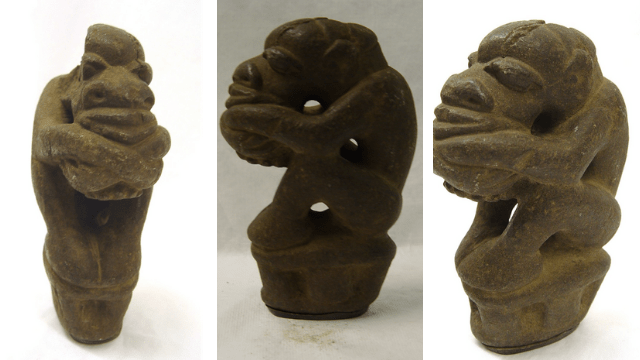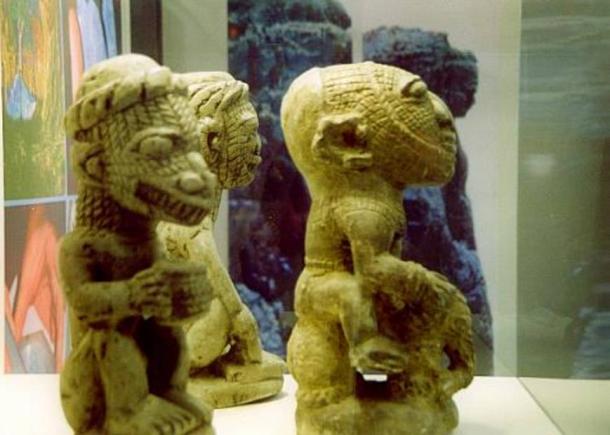Nomoli figurines are stone statues depicting human-like figures that in some cases look like reptilians. They are carved from soapstone, granite, or limestone. There is still no information about the origin of these figurines, but they are considered to be the earliest art found in Sierra Leone and Liberia on the coast of West Africa. Experts believe that the stone art is extremely old, dating between 2,500 to 17,000 BC.

While examing Nomoli figures, it was found out that some of them had been created using high-melting temperatures. It suggests that the people who created them were highly advanced according to their time.
According to one theory, it is believed that Nomoli figures are associated with the handiwork of local ethnic people of Sierra Leone known as the Mende, who used these images to be buried with dead people. But another theory suggests that these figurines were used by the natives of Sierra Leone to protect them from evil spirits. They used to put them outside their houses and in the gardens as a lucky charm for a good harvest.
There are many legends hovering around Nomoli. For example, according to one of them, the figurines were accidentally found in diamond mines by the local workers.
Read also:
- Sumerian & Biblical Texts Claim People Lived For 1000 Years Before Great Flood: Is It True?
- Mystery Of Sharp Ringing Noise & Electric Spark Recorded At Great Pyramid Summit
- Mystery Of UFO-Shaped Object On Sphinx’s Head Shown In Ancient Egyptian Papyrus
- Mysterious Reincarnation Of Omm Seti: British Woman Who Proved To Have Lived In Ancient Egypt
According to legends, once, a god punished the angels living in heaven for their bad behavior, turned them into humans and sent them to Earth. So, the Nomoli figures represent these angels to show how god forbade them in heaven.

Another legend said that these figures are the representation of ancient kings and rulers of Sierra Leone regions. Besides, the local ethnic group of Temne people performed rituals and ceremonies to treat these figures in the memory of ancient leaders. But this tradition was lost after the Temne people were invaded by the Mende. The local inhabitants believe that before the appearance of the first human, a single continent was inhabited by giants who were similar at the same time to humans and reptiles.

The appearance of Nomoli figurines is quite distinctive, some have human-like figures while ancient astronaut theorists believed that they were reptilian figures. In some cases, the statues have human bodies but animal faces such as elephants, leopards, and monkeys. What’s more, the figures have bizarre body shapes with large heads. Another figure depicts a slightly big human riding an elephant which is smaller in size in comparison to the human. Most of them sit cross-legged or kneeling, some cover their face with their hands and other figures have a kind of weapon or shield.
Researcher Giorgio Belluomini from the University of Rome analyzed these objects several times in 1992 and concluded that the age of these figurines was between 2,500 to 17,000 BC.

The most interesting thing found in one of these figures was the small spherical metallic ball which could not have been created during that time. A very high melting temperature is required to mold the metal into a perfect sphere. This indicates that there existed an advanced civilization in West Africa 17,000 years ago.








